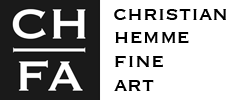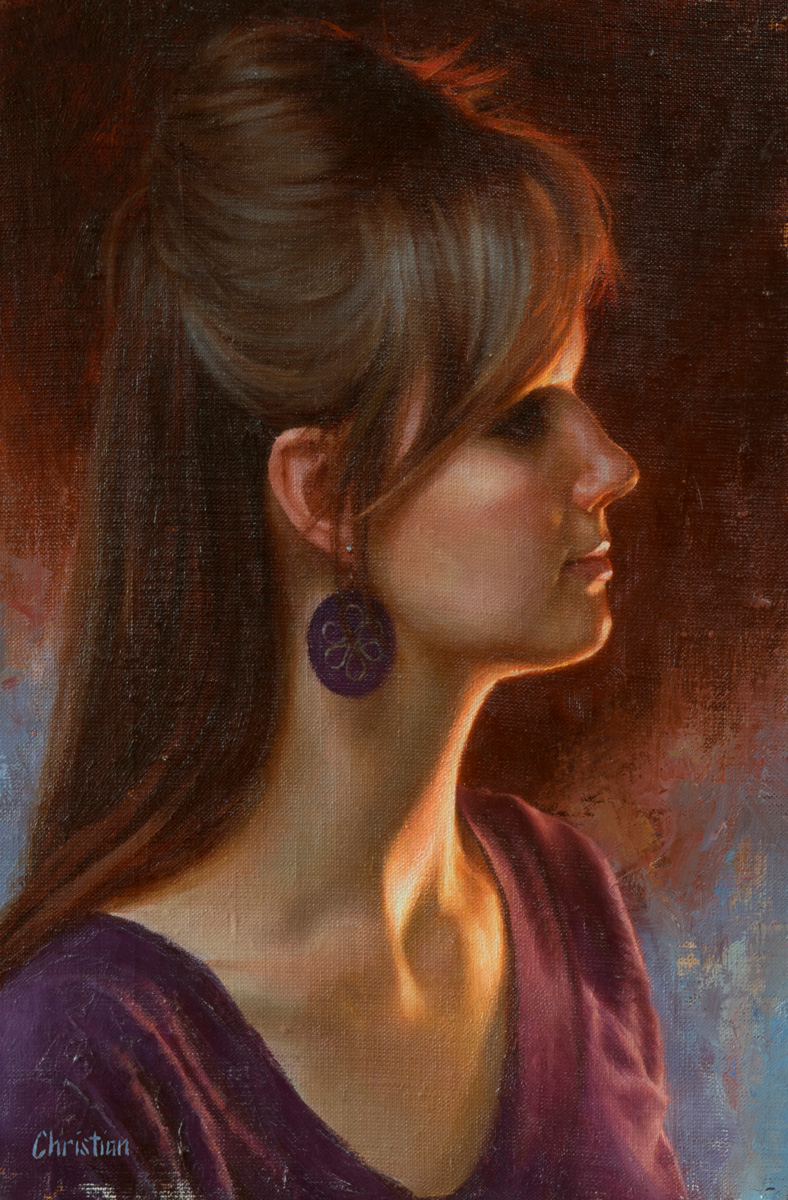Harmony in Violet | 11.5×17.5 | Oil on Linen Panel
Inspiration for Harmony in Violet
A college acquaintance modeled for Harmony in Violet, which I began from life with a group of artist friends. I miss the camaraderie and positive critique that goes along with painting in groups! As you can see, the model is lit by two light sources of different types, one above and the other below. The effect this creates is, I believe, usually quite beautiful. In modern times we have the luxury of artificial lighting that can reproduce just about any effect found in nature. However, before the advent of technolgy, I imagine this sort of light situation would occur extremely infrequently. If this were a historical piece, I would picture the young woman sitting near a warm, roaring fire, with skylight shining through an open window. Perhaps these peaceful mental connotations are the reason this lighting setup is so popular!
The Challenge of Dual Light Sources
There are two distinct lights falling on the subject. Although both lights are “white,” they have differing qualities. For those of you who haven’t worked with photography or painting, light sources are usually described as either having a “warm temperature” or “cool temperature.” In this painting, the light coming from above is a “cool” light, having a more bluish feel. The light coming from below is a “warm” light, having a more orange-yellow feel. In nature, the sun and fire would be “warm” light sources, whereas the moon or the indoor light coming from a bright blue sky would be “cool” light. Cloudy skies produce light that are about halfway between the two. Recognizing the “temperature” of light is very important to artists and all other visual arts professionals. The way colors act and the effects of light and shadow differ drastically based upon the temperatures. For painters, having two different light sources on a subject is actually quite tricky. The distinct differences that occur with the separate temperatures have to be carefully articulated. And any areas of overlap can become terribly confusing! Learn more about light and color temperature on Wikipedia, or check out my favorite artist’s source for information about light and color, master artist and illustrator James Gurney’s book aptly titled Color and Light.


